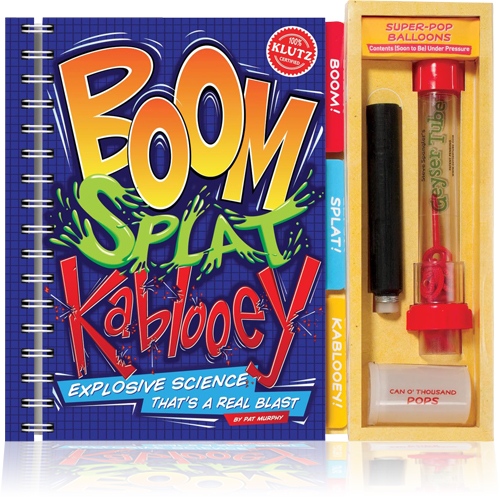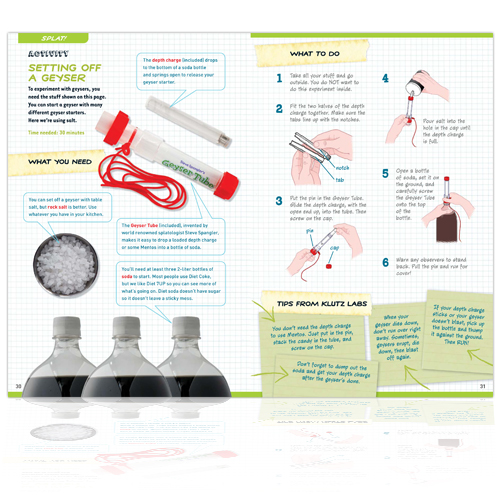Boom Splat Kablooey – Steve Spangler Science and Klutz Team Up to Create a New Experience for Kids
 Little known fact… I love to juggle. Better known fact… I’m not that good, but that’s not a reflection on my teacher – a great book called Juggling for the Complete Klutz. This was my introduction to Klutz Press some 30 years ago – an amazing company with a vision for really innovative product. So, when I was invited by the editors of Klutz to be a contributor to their latest book – Boom Splat Kablooey – I was thrilled. The book is scheduled for release in the next few weeks… but readers of this blog can purchase a copy from our store now.
Little known fact… I love to juggle. Better known fact… I’m not that good, but that’s not a reflection on my teacher – a great book called Juggling for the Complete Klutz. This was my introduction to Klutz Press some 30 years ago – an amazing company with a vision for really innovative product. So, when I was invited by the editors of Klutz to be a contributor to their latest book – Boom Splat Kablooey – I was thrilled. The book is scheduled for release in the next few weeks… but readers of this blog can purchase a copy from our store now.
Boom Splat Kablooey author Pat Murphy wanted to use our Geyser Tube toy as a trigger device for the perfect soda geyser, but she wanted young readers to experiment beyond the popular MENTOS® version. What if you want to test other materials like rock salt, sand, pepper, marbles… whatever? That’s the question that Klutz posed to us when we began development on the Geyser Tube Depth Charge. After lots of testing and lots of geysers going off, the Depth Charge and the Geyser Tube became a winning combination.
With the Geyser Tube Depth Charge, all you have to do is scoop up a tube full of whatever Geyser Starter you want to try. Slide your full Depth Charge into the Geyser Tube attached to your bottle of Diet Coke, pull the pin and stand back! As soon as the pin is pulled, the Depth Charge falls instantly to the bottom of the soda bottle because of a tiny weight on the bottom of the charge. When it hits the bottom, the side shears off and the material quickly disperses throughout the soda. Now that the carbon dioxide has something to latch onto, it’s up and out of the bottle.
 The really great thing about the Boom Splat Kablooey kit and the Depth Charge is that it provides an excellent way for students to turn a cool science demonstration into a well-thought out, science project. The Depth Charge allows for different variables to be used in determining the best possible conditions for a geyser. Students can hypothesize which material they think will work best and then measure their results scientifically to determine their conclusion.
The really great thing about the Boom Splat Kablooey kit and the Depth Charge is that it provides an excellent way for students to turn a cool science demonstration into a well-thought out, science project. The Depth Charge allows for different variables to be used in determining the best possible conditions for a geyser. Students can hypothesize which material they think will work best and then measure their results scientifically to determine their conclusion.
I’m excited for this book to hit the shelves and excited that are able to offer Depth Charges on SteveSpanglerScience.com. My goal is to create awareness of science fundamentals while keeping the experiments fresh and fun for students. I think the Depth Charge is going to be an awesome way to do that.




Were you a science teacher at Olympia High School?
Sorry… never a teacher at Olympia High School.